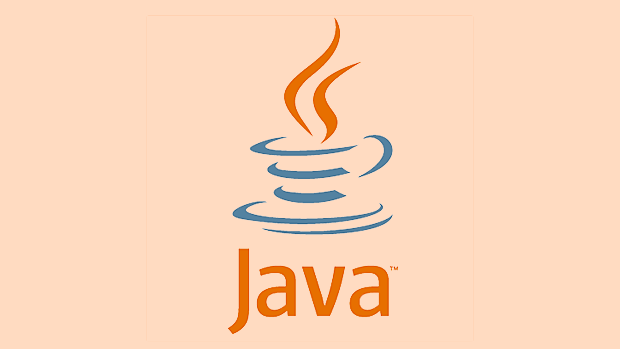The transient keyword in Java prevents specific fields from being serialized. 1. It is used to exclude sensitive data (e.g., passwords), temporary values, or fields that can be recomputed after deserialization. 2. Fields marked as transient are skipped during serialization and reset to default values (null for objects, zero/false for primitives) upon deserialization. 3. It improves security, performance, and compatibility when dealing with unserializable types or cached data. 4. Usage is straightforward: declare a field with private transient Type fieldName;. 5. Custom serialization logic can be added using writeObject() and readObject(). 6. Note that transient does not affect static fields or in-memory behavior, and it doesn’t encrypt data—it only omits it from the serialized stream.

In Java, the transient keyword plays a specific but important role when it comes to object serialization. If you're working with saving and restoring Java objects, especially when writing them to files or sending them over a network, understanding transient is key to controlling what gets saved and what doesn’t.

What does transient do?
When a field in a class is marked as transient, it tells Java not to serialize that field. This means if you have an object that implements Serializable, any transient variables won't be saved when the object is written to a stream.
For example, imagine a user object with a password field. You might want to keep that password in memory but not write it to disk for security reasons. Marking it as transient ensures it’s skipped during serialization.

This behavior is useful in situations like:
- Sensitive data (e.g., passwords)
- Temporary or runtime-only values
- Fields that can be safely recomputed after deserialization
When should you use transient?
There are several practical cases where marking a field as transient makes sense:

- Security: As mentioned, fields containing sensitive information shouldn’t be serialized.
- Performance: Large or unnecessary fields may slow down serialization or take up extra space.
-
Unserializable types: If a field contains an object that doesn’t implement
Serializable, marking ittransientavoids errors. - Caching: If a field holds cached results that can be regenerated, there's no need to store it.
You don’t always need transient. Only use it when you actively want to exclude certain fields from being part of the serialized data.
How to use transient in code
Using transient is straightforward. Just add it to the field declaration like this:
private transient String sensitiveData;
Here’s a basic example:
public class User implements Serializable {
private String username;
private transient String password;
// constructor, getters, setters...
}When you serialize an instance of User, the password field will not be included. After deserialization, its value will be null (or the default value for primitive types).
If you ever need custom control beyond just skipping fields, you can also implement writeObject() and readObject() methods to define exactly how your object should be serialized or restored.
Keep in mind:
-
transientonly affects serialization, not in-memory behavior - Static fields aren’t serialized anyway, so
transientisn’t needed there - Using
transienton primitive types works the same way — their default values are restored
A few gotchas to remember
One thing that trips people up is assuming all fields will be automatically restored to their original state after deserialization. But if a field is transient, you’ll need to re-initialize it manually if needed.
Also, version changes can cause issues. If you add or remove transient fields after already serializing some objects, deserialization may still work, but be careful when modifying existing fields incompatibly.
And one more thing: while transient helps with security by omitting sensitive data, it doesn’t encrypt or protect anything — it just skips writing those fields to the stream.
So, basically, transient is a simple but powerful tool in Java for controlling what gets saved when objects are serialized. It’s not complicated, but it’s easy to overlook when designing classes meant for serialization.
The above is the detailed content of The role of the 'transient' keyword in Java. For more information, please follow other related articles on the PHP Chinese website!

Hot AI Tools

Undress AI Tool
Undress images for free

Undresser.AI Undress
AI-powered app for creating realistic nude photos

AI Clothes Remover
Online AI tool for removing clothes from photos.

Clothoff.io
AI clothes remover

Video Face Swap
Swap faces in any video effortlessly with our completely free AI face swap tool!

Hot Article

Hot Tools

Notepad++7.3.1
Easy-to-use and free code editor

SublimeText3 Chinese version
Chinese version, very easy to use

Zend Studio 13.0.1
Powerful PHP integrated development environment

Dreamweaver CS6
Visual web development tools

SublimeText3 Mac version
God-level code editing software (SublimeText3)

Hot Topics
 How Java ClassLoaders Work Internally
Jul 06, 2025 am 02:53 AM
How Java ClassLoaders Work Internally
Jul 06, 2025 am 02:53 AM
Java's class loading mechanism is implemented through ClassLoader, and its core workflow is divided into three stages: loading, linking and initialization. During the loading phase, ClassLoader dynamically reads the bytecode of the class and creates Class objects; links include verifying the correctness of the class, allocating memory to static variables, and parsing symbol references; initialization performs static code blocks and static variable assignments. Class loading adopts the parent delegation model, and prioritizes the parent class loader to find classes, and try Bootstrap, Extension, and ApplicationClassLoader in turn to ensure that the core class library is safe and avoids duplicate loading. Developers can customize ClassLoader, such as URLClassL
 Asynchronous Programming Techniques in Modern Java
Jul 07, 2025 am 02:24 AM
Asynchronous Programming Techniques in Modern Java
Jul 07, 2025 am 02:24 AM
Java supports asynchronous programming including the use of CompletableFuture, responsive streams (such as ProjectReactor), and virtual threads in Java19. 1.CompletableFuture improves code readability and maintenance through chain calls, and supports task orchestration and exception handling; 2. ProjectReactor provides Mono and Flux types to implement responsive programming, with backpressure mechanism and rich operators; 3. Virtual threads reduce concurrency costs, are suitable for I/O-intensive tasks, and are lighter and easier to expand than traditional platform threads. Each method has applicable scenarios, and appropriate tools should be selected according to your needs and mixed models should be avoided to maintain simplicity
 Understanding Java NIO and Its Advantages
Jul 08, 2025 am 02:55 AM
Understanding Java NIO and Its Advantages
Jul 08, 2025 am 02:55 AM
JavaNIO is a new IOAPI introduced by Java 1.4. 1) is aimed at buffers and channels, 2) contains Buffer, Channel and Selector core components, 3) supports non-blocking mode, and 4) handles concurrent connections more efficiently than traditional IO. Its advantages are reflected in: 1) Non-blocking IO reduces thread overhead, 2) Buffer improves data transmission efficiency, 3) Selector realizes multiplexing, and 4) Memory mapping speeds up file reading and writing. Note when using: 1) The flip/clear operation of the Buffer is easy to be confused, 2) Incomplete data needs to be processed manually without blocking, 3) Selector registration must be canceled in time, 4) NIO is not suitable for all scenarios.
 Best Practices for Using Enums in Java
Jul 07, 2025 am 02:35 AM
Best Practices for Using Enums in Java
Jul 07, 2025 am 02:35 AM
In Java, enums are suitable for representing fixed constant sets. Best practices include: 1. Use enum to represent fixed state or options to improve type safety and readability; 2. Add properties and methods to enums to enhance flexibility, such as defining fields, constructors, helper methods, etc.; 3. Use EnumMap and EnumSet to improve performance and type safety because they are more efficient based on arrays; 4. Avoid abuse of enums, such as dynamic values, frequent changes or complex logic scenarios, which should be replaced by other methods. Correct use of enum can improve code quality and reduce errors, but you need to pay attention to its applicable boundaries.
 How to handle exceptions properly in Java?
Jul 06, 2025 am 02:43 AM
How to handle exceptions properly in Java?
Jul 06, 2025 am 02:43 AM
The key to handling exceptions in Java is to catch them, handle them clearly, and not cover up problems. First, we must catch specific exception types as needed, avoid general catches, and prioritize checkedexceptions. Runtime exceptions should be judged in advance; second, we must use the log framework to record exceptions, and retry, rollback or throw based on the type; third, we must use the finally block to release resources, and recommend try-with-resources; fourth, we must reasonably define custom exceptions, inherit RuntimeException or Exception, and carry context information for easy debugging.
 What is an anonymous inner class?
Jul 07, 2025 am 02:18 AM
What is an anonymous inner class?
Jul 07, 2025 am 02:18 AM
Anonymous internal classes are used in Java to create subclasses or implement interfaces on the fly, and are often used to override methods to achieve specific purposes, such as event handling in GUI applications. Its syntax form is a new interface or class that directly defines the class body, and requires that the accessed local variables must be final or equivalent immutable. Although they are convenient, they should not be overused. Especially when the logic is complex, they can be replaced by Java8's Lambda expressions.
 What is a Singleton design pattern in Java?
Jul 09, 2025 am 01:32 AM
What is a Singleton design pattern in Java?
Jul 09, 2025 am 01:32 AM
Singleton design pattern in Java ensures that a class has only one instance and provides a global access point through private constructors and static methods, which is suitable for controlling access to shared resources. Implementation methods include: 1. Lazy loading, that is, the instance is created only when the first request is requested, which is suitable for situations where resource consumption is high and not necessarily required; 2. Thread-safe processing, ensuring that only one instance is created in a multi-threaded environment through synchronization methods or double check locking, and reducing performance impact; 3. Hungry loading, which directly initializes the instance during class loading, is suitable for lightweight objects or scenarios that can be initialized in advance; 4. Enumeration implementation, using Java enumeration to naturally support serialization, thread safety and prevent reflective attacks, is a recommended concise and reliable method. Different implementation methods can be selected according to specific needs
 Windows automatic repair loop fix
Jul 07, 2025 am 01:31 AM
Windows automatic repair loop fix
Jul 07, 2025 am 01:31 AM
Use the installation media to enter the recovery environment; 2. Run the bootrec command to repair the boot records; 3. Check for disk errors and repair system files; 4. Disable automatic repair as a temporary means. The Windows automatic repair loop is usually caused by system files corruption, hard disk errors or boot configuration abnormalities. The solution includes troubleshooting by installing the USB flash drive into the recovery environment, using bootrec to repair MBR and BCD, running chkdsk and DISM/sfc to repair disk and system files. If it is invalid, the automatic repair function can be temporarily disabled, but the root cause needs to be checked later to ensure that the hard disk and boot structure are normal.






